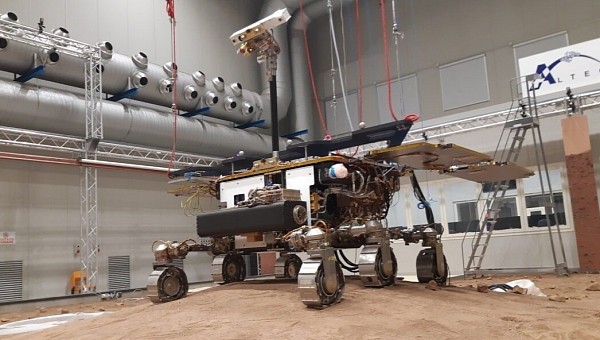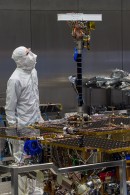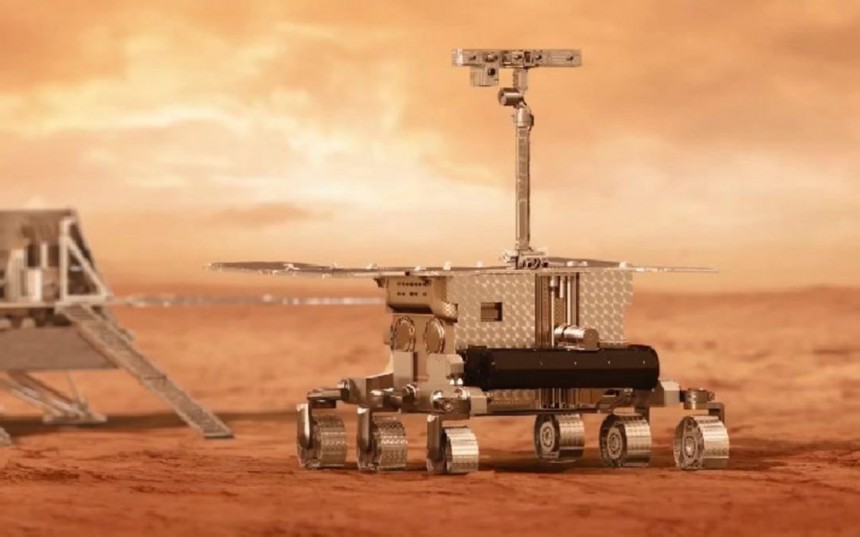It might be easy to forget that the European Space Agency is perfectly capable of operating in space on its own when they aren't helping NASA get to the Moon. In fact, they have the self-agency to work with whomever they please, including Roscosmos. But that power to hire also implies the power to fire. Cue the Russian invasion of Ukraine.
In regards to the ESA/Roscosmos ExoMars project, this event triggered the severing of ties with their long-time Russian partners in stark protest of the Russian regime's actions in Eastern Europe. It seemed like a death sentence for a partnership that traces its roots back to 2001. But, with all hopes of a future Martian rover mission seemingly on the rocks, the ESA recently announced a direct injection of funding to keep the Rosalind Franklin rover program alive.
The key issue of contention comes not from anything to do with ESA hardware but rather the vital landing component of the rover mission called the Kazachok lander. Named for the traditional Russian Cossack Dance, this element was the responsibility of Roscosmos to design. With a heightened sense of urgency at hand, the ESA entered a two-day council gathering to discuss the specifics of what was sure to be a nine-figure monetary injection regardless of the specifics.
In the end, an agreement was reached for a direct monetary investment of €700 million ($725 million) to keep the ExoMars Martian Rover, now named the Rosalind Franklin project financially viable. As of November 2022, Spacenews.com, who first reported the story, pegs the launch date for the Rosalind Franklin rover as sometime in 2028, with operations on the Martian surface expected to begin in 2029 on the Oxia Palus quadrangle.
If all goes to plan, the rover will conduct vital science in preparation for a NASA Artemis program that, by this stage, is hopefully well acquainted with living and working on the Moon by this point. Enough for a genuine attempt at a human-crewed mission to the Red Planet, ostensibly using a spacecraft similar to the Orion capsule currently in Lunar Orbit for Artemis I. In the meantime, let's take a look at the details of what the ESA plans to send to Mars.
Designed and built primarily by Airbus Defence and Space alongside the French defense company Astrium, the Rosalind Franklin rover is named in honor of the lauded and tragically lost-too-soon British chemist who helped discover the structure of DNA. As such, the name of the game when it comes to this rover is helping uncover clues about evidence of DNA and other organic compounds that may be hiding under the Martian dust.
At roughly 60 percent more mass than the Spirit and Opportunity NASA rovers delivered to Mars in 2004, the Rosalind Franklin is still somewhat smaller than Curiosity and Perseverance rovers that constituted NASA's next generation of Martian rovers. With power expected to come from a solar-recharged 1,200-watt lithium-ion battery, this rover is like an electric car built for space.
The rover will come complete with a full suite of sensors, scientific instruments, and communications arrays to relay every kilobit in a sea of terabytes of data the ESA expects this rover to gather. Be it the Martian regolith, its stones and boulders, its paper-thin atmosphere, and even hidden deposits of water-ice. The Rosalind Franklin will be equipped to analyze it all.
That's assuming the ESA can figure out some novel way of getting this rover down to the Martian surface without the benefit of Russian technology. It's not like there's a multi-billion-dollar space agency across the Atlantic Ocean with roughly four or five different heavy-lift booster rockets to choose from.
Oh wait, that's what NASA is. No word yet on if the Americans will get involved in the ExoMars project. If we were betting people, we'd say the chances of this happening are pretty good.
The key issue of contention comes not from anything to do with ESA hardware but rather the vital landing component of the rover mission called the Kazachok lander. Named for the traditional Russian Cossack Dance, this element was the responsibility of Roscosmos to design. With a heightened sense of urgency at hand, the ESA entered a two-day council gathering to discuss the specifics of what was sure to be a nine-figure monetary injection regardless of the specifics.
In the end, an agreement was reached for a direct monetary investment of €700 million ($725 million) to keep the ExoMars Martian Rover, now named the Rosalind Franklin project financially viable. As of November 2022, Spacenews.com, who first reported the story, pegs the launch date for the Rosalind Franklin rover as sometime in 2028, with operations on the Martian surface expected to begin in 2029 on the Oxia Palus quadrangle.
If all goes to plan, the rover will conduct vital science in preparation for a NASA Artemis program that, by this stage, is hopefully well acquainted with living and working on the Moon by this point. Enough for a genuine attempt at a human-crewed mission to the Red Planet, ostensibly using a spacecraft similar to the Orion capsule currently in Lunar Orbit for Artemis I. In the meantime, let's take a look at the details of what the ESA plans to send to Mars.
At roughly 60 percent more mass than the Spirit and Opportunity NASA rovers delivered to Mars in 2004, the Rosalind Franklin is still somewhat smaller than Curiosity and Perseverance rovers that constituted NASA's next generation of Martian rovers. With power expected to come from a solar-recharged 1,200-watt lithium-ion battery, this rover is like an electric car built for space.
The rover will come complete with a full suite of sensors, scientific instruments, and communications arrays to relay every kilobit in a sea of terabytes of data the ESA expects this rover to gather. Be it the Martian regolith, its stones and boulders, its paper-thin atmosphere, and even hidden deposits of water-ice. The Rosalind Franklin will be equipped to analyze it all.
That's assuming the ESA can figure out some novel way of getting this rover down to the Martian surface without the benefit of Russian technology. It's not like there's a multi-billion-dollar space agency across the Atlantic Ocean with roughly four or five different heavy-lift booster rockets to choose from.








